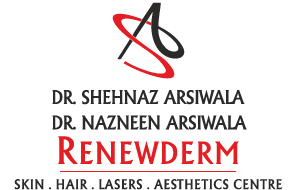The Bulging Battle
Cosmetologist perspective
Corticosteroids are the most powerful drug available to the medical practitioners in this era. They were first available as commercial preparations in 1952 and the numerous desirable qualities that they possess has ensured their wide usage in the field of medicine especially dermatology.
The medical world has seen a path breaking achievement in treating and controlling various diseases with the steroids. This molecule has a broad applicability in treating a variety of conditions; most conditions show rapid results in small doses, there is ease of use and absence of pain or odor. Steroids also possess a relative lack of sensitivity, prolonged stability and compatibility with other applied molecules making them a drug of choice in many a conditions.
The steroids preparations are available as injectables, oral tablets and as a plethora of applied forms like creams, gels, ointments lotions, shampoos, etc and can be administered to all age groups within the medical protocol, thus it becomes easy for a physician to select the mode of usage depending on the severity of the medical disorder and desired result anticipated.
In the British National Formulary, topical corticosteroids are graded according to their potency into four classes; mildly potent, e.g. hydrocortisone base or acetate 2.5%, moderately potent, e.g. hydrocortisone 17 butyrate 0.1%, potent, e.g. betamethasone 17 valerate 0.1%, and very potent, e.g. clobetasole propionate 0.05%. Topical corticosteroids have vasoconstrictive, anti-inflammatory and antiproliferative effect.
A large number of topical corticosteroids are available commercially, up to the point of confusion.
As any powerful drug would have its share of drawbacks, so it is with steroids, for when used injudiciously multiple potential adverse effects can surface .and hence the medical fraternity remains alert and cautious and often tends to prescribe these and warn the patient that the steroids should be used under medical guidance. Steroids can give a quick resolution of various conditions like eczema and also mask the symptoms of various itchy and inflamed skin conditions. many patients tend to continue these creams on and off for many months after initial prescription to obtain symptomatic relief and this may act as a detriment thus increasing the propensity for side effects , patient develops dependence to the product and not only so but the underlying dermatological condition may even become unresponsive to the product .
Patients Guidelines for use of Steroids
- Always use them under medical guidance
- Do not increase or decrease the doses on your own
- If you have been prescribed steroid preparations your doctor has a good scientific medical basis for doing so. Follow the physician advice and do not panic or fear side effects even before starting them
- A second opinion can be sought in case you are doubtful or too worried about using them
- Certain disorders respond beneficially to steroids and most of the side effects arising out of their use can be observed for closely and if they arise they are largely reversible on discontinuation of the steroids and manageable
- Different areas of skin absorb applied steroids differently and one must adhere to technique , guidelines and quantity of application clearly .e.g. A hydrocortisone cream can penetrate an eczematous skin twice than a normal skin. Also a hydrated and inflamed skin absorbs a steroid four fold.
Creams available over the counter and having steroids are freely used by people innocently and also suggested to friends, family for relief of milder situations which is another detriment.
Most of the practitioners are conscious enough of the above facts regarding steroid usage and in those long term disorders which needs prolonged usage of applied steroids one often gives steroid cream holidays by using moisturizer creams in between once the situation is controlled.
The main fear from oral or injectable steroid arises from the fact that the body has its own steroid production and regulation mechanism. This can be suppressed if high doses or prolonged therapy has to be administered externally. In certain life threatening skin diseases, drug reactions or overactive reactive disorders of the immune system their use may be justified. It is better to keep faith in such situations over your physician and a second opinion or a specialist advice can be sought regarding the same if one is in doubt
However, these are important considerations, and your physician needs to weigh and compare the risks and benefits associated with these medications before initiating treatment .The benefits of steroid treatment must be balanced against the risks of short- and long-term side effects. Prolonged treatment with high doses should be avoided where possible. This involves an appreciation of which patient populations are at high risk for side effects and may require the addition or substitution of non steroid disease-modifying or immunosuppressant drugs.
Common side effects of applied steroid preparation are
If exceeded for more than a month or high potency preparations are used
Thinning of the skin
Increased skin fragility
Activation of acne
Precipitation of fungal or bacterial infections
Formation of stria or stretch marks
Loss of pigment from the skin
Delayed wound healing etc
Most of them are reversible on discontinuation...
Children may be more vulnerable than adults to systemic effects of topical corticosteroids because percutaneous absorption is proportionately greater.
DISLAIMER:
THE INFORMATION IN THIS ARTICLE REFLECTS THE VIEWS OF THE AUTHOR ONLY. A QUALIFIED HEALTH CARE PROFESSIONAL SHOULD BE CONSULTED BEFORE USING ANY THERAPEUTIC PRODUCT DISCUSSED. ALL READERS SHOULD VERIFY ALL INFORMATION AND DATA BEFORE TREATING PATIENTS OR UTILIZING ANY THERAPIES NOTED IN THIS PROGRAMME.
